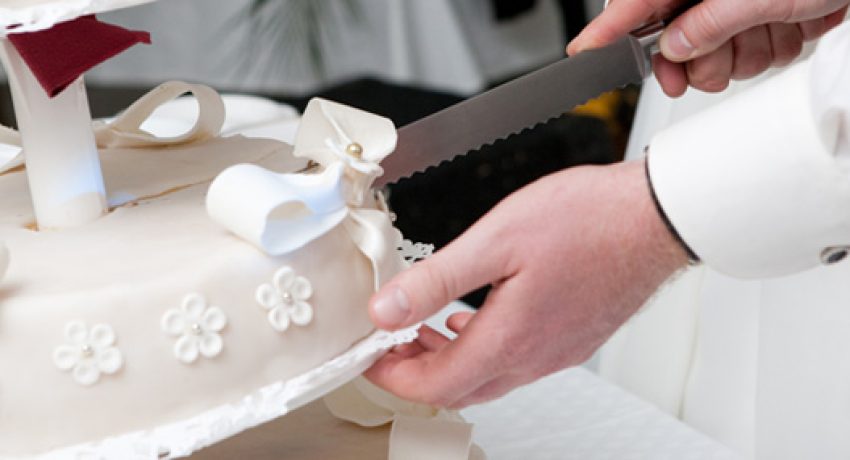The modern day wedding cake has evolved from a series of traditions and can be seen as a symbolic reflection of the couple getting married as well as a design feature. The kind of wedding cake you choose for your wedding reception will be influenced by how many guests you wish to serve or if indeed you intend for the cake to be eaten at all by the guests. Both ingredients and designs can vary greatly, representing the wishes and personalities of the bride and groom.
Types of Wedding Cake
Traditionally wedding cakes were made from a rich fruit cake recipe covered in marzipan and thick royal icing, however, more commonly today a vanilla sponge and cream filling is used as well as chocolate cake covered in thick white or colored icing. Having said that, there are popular variants on the convention, including cupcake wedding towers and croquembouche (profiterole cones):
-
Tiered Fruit Cake
A rich flavored fruit cake, covered in thick decorative icing and stacked in tiers, said to have been first designed by a baker’s apprentice in the 1700s based on the spire of St Brides Church in London.
-
Cupcake Tower/Tree
This is a popular alternative to having a wedding cake in the traditional sense. Each cupcake can be arranged as you wish or in the shape of a tiered cake or tower. If you prefer, each cupcake could have a different flavor.
-
Croquembouche
This wedding dessert is a French tradition but a popular choice. A tower or cone of choux pastry balls (profiteroles) are stacked like a tree and cascaded in toffee or butterscotch cream.
-
Cheese Cake
Cheese cake layers are becoming more and more popular among couples who are not great fans of cake. You can decorate each cheese cake tier with fruit or other delicate toppers and create a beautiful tiered effect at a much lower price.
History of the Wedding Cake
Like many wedding traditions, the vague roots of the wedding cake custom can be traced back to the Romans who were said to have broken bread over the bride’s head to bring good luck to the bride and groom. Later, during Medieval times, English brides and grooms would stack cake as high as possible and then try to kiss over the top of the cake. If they managed to kiss without the cake stack falling, it was supposed to represent good luck. This tradition rolex day date m228345rbr 0012 uomini 41mm automatico can still be seen nowadays in the French variation of the Croquembouche. Tradition says that the tiered wedding cake originated from the design of the aforementioned London baker’s apprentice, who modeled his wedding cake on St Brides Church. Later came wedding cakes with pillars to help define each of the tiers, representing prosperity and status.
Cutting the cake
Nowadays, cutting the wedding cake is a great photo opportunity and usually sees both the bride and groom joined in the act of making the first symbolic incision, although originally it was the bride who cut and distributed the cake, being a symbol of the bride’s fertility. Later, as weddings became bigger and more icing sugar was used to give each layer of the cake greater solidity to sustain the pillars, it took the force of both bride and groom to cut the cake.
Wedding Cake Tiers
The reason for each of the tiers on the wedding cake also carries its own significance, with various theories. One tradition suggests that each layer represents each of the marriage rings: the engagement ring, the wedding ring and the eternity ring, while another custom claims that the bottom layer signifies the couple as a family, the middle tiers their children and the top layer them as a couple. Traditionally, religious couples would save the top layer to eat at the christening of their first child (which is much more likely with a rich fruit cake).















